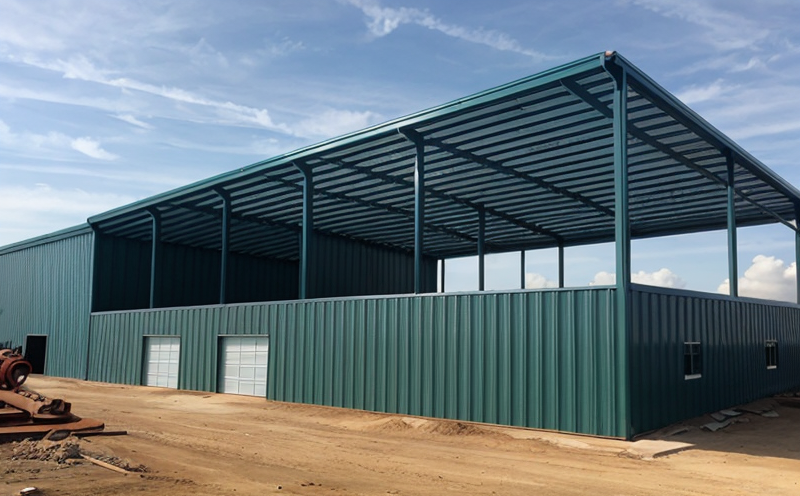UL 1998 Software Reliability and Environmental Stress Testing for IoT
The UL 1998 standard provides a framework to ensure that software deployed in Internet of Things (IoT) devices is robust, reliable, and capable of withstanding the environmental stresses encountered during its lifecycle. This service involves comprehensive testing to validate the performance, reliability, and security of IoT device software under various conditions.
The UL 1998 standard focuses on several key areas: static code analysis, dynamic code analysis, functional testing, stress testing, and environmental stress testing. Static code analysis helps identify potential vulnerabilities before any code is executed, while dynamic code analysis assesses the behavior of the software during runtime. Functional testing ensures that all functions work as expected under normal conditions.
Stress testing pushes the system to its limits by subjecting it to extreme conditions, which helps uncover defects or failures in the software that would otherwise go unnoticed. Environmental stress testing examines how the software performs when exposed to environmental factors such as temperature extremes, humidity levels, and power fluctuations. This ensures that the IoT device can operate reliably even under challenging circumstances.
The UL 1998 standard is particularly relevant for smart home products like thermostats, security cameras, and smart speakers. These devices often rely heavily on software to function correctly and securely. By adhering to this standard, manufacturers can ensure their IoT products meet the highest safety and reliability standards.
The testing process typically involves several stages, including initial setup, calibration of test equipment, specimen preparation (which in this case would be the IoT device’s software codebase), conducting tests under controlled conditions, recording results, and analysis. The use of advanced instrumentation allows for precise measurement of various parameters such as voltage levels, temperature changes, and signal strength.
Upon completion of testing, detailed reports are generated that outline the performance metrics achieved during each test run. These reports serve multiple purposes: they provide valuable insights into any weaknesses or areas requiring improvement; they help guide future development efforts; and most importantly, they offer peace of mind to consumers knowing their devices have undergone rigorous scrutiny.
| Parameter | Description |
|---|---|
| Static Code Analysis | Identification of potential vulnerabilities in the software codebase before execution. |
| Dynamic Code Analysis | Evaluation of the behavior of the software during runtime to identify issues that arise at execution time. |
| Functional Testing | Verification that all functions within the software operate correctly under normal operating conditions. |
| Stress Testing | Presentation of extreme conditions to determine how well the software holds up under pressure or stress. |
| Environmental Stress Testing | Evaluation of the software’s ability to maintain functionality when exposed to environmental factors like temperature and humidity fluctuations. |
Benefits
Implementing UL 1998 Software Reliability and Environmental Stress Testing for IoT devices offers numerous advantages:
- Enhanced reliability: Ensures that the software performs consistently across all environments.
- Better security: Identifies potential vulnerabilities early in the development process, reducing risk of cyberattacks.
- Improved user experience: Consumers trust brands that produce reliable and secure products.
- Regulatory compliance: Meeting industry standards helps avoid legal issues related to non-compliance.
- Increased market competitiveness: Brands known for producing high-quality, dependable IoT devices gain a competitive edge.
- Cost savings: Early detection of defects through thorough testing saves money on potential warranty claims and repair costs later down the line.
Why Choose This Test
Selecting UL 1998 Software Reliability and Environmental Stress Testing for IoT devices is crucial due to several factors:
- It ensures that the software meets stringent quality standards.
- The process provides comprehensive coverage of all aspects affecting the reliability and security of IoT device software.
- Compliance with this standard enhances brand reputation among consumers who value safety and dependability.
- It offers peace of mind to both manufacturers and users regarding the quality and performance of the product.
- The detailed reports generated from these tests can be used to inform future development decisions, leading to continuous improvement in product offerings.
Use Cases and Application Examples
- Smart Thermostats: Ensuring accurate temperature readings and efficient energy management across varied climates.
- Security Cameras: Guaranteeing clear video feeds in varying lighting conditions without interruption or distortion.
- Smart Speakers: Maintaining audio quality irrespective of background noise levels or power supply variations.
| IoT Device Type | Test Objective | Expected Outcome |
|---|---|---|
| Smart Thermostat | Achieve accurate temperature regulation in diverse weather conditions. | Precise and reliable temperature control system. |
| Security Camera | Ensure stable video transmission even under adverse environmental conditions. | Uninterrupted, high-definition video feed in all scenarios. |
| Smart Speaker | Maintain consistent audio quality regardless of ambient noise or power supply fluctuations. | Crystal-clear sound output under any circumstances. |





